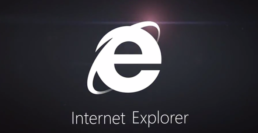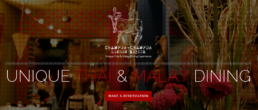A kicker of a social media manager slip-up
Every social media manager's worst nightmare is posting something on the wrong social channel.
With the click of a (wrong) button, a social media manager can unleash any number of posts, tweets, photos or videos to the wrong account for thousands to see. For an inexperienced manager, this is an easy mistake to make. For those of us more experienced, this is only a distant nightmare that we (touch wood) hope will never happen.
Unfortunately, this is exactly what happened to the social media manager in charge of Arsenal's Mesut Ozil and Man City's Ilkay Gundagon's social media channels. A post that was clearly meant to be posted on Gundagon's Twitter page was accidentally posted on rival team player Ozil's page. The link between the two is that both players are German-Turks, which makes it even more likely that this mishap was the working of the same social media manager.
Haha, whoever runs @Guendogan8 twitter, also runs @MesutOzil1088 twitter and just made a big mistake pic.twitter.com/9dji9lzJIs
— Daniel Melia (@danmelia) August 1, 2016
The interesting part of this story is the reaction from fans. Many were disappointed at the realisation that Ozil wasn't personally tweeting himself. Fans felt betrayed and annoyed that the persona they'd come to know and love was actually a random person at the end of a computer. The upside to this is that the social media manager must have been doing a good job to make fans think it was the man himself.
So, what can we learn from this all-mightly slip up? Firstly, take social media with a pinch of salt. It's highly likely that your favourite celebrity is paying for a professional to run their accounts for them. Secondly, remember that for many, social media is all business. Whilst the average Joe might use social media for its primary purpose - communication - celebrities, footballers, brands, bloggers, etc use social media for business purposes, and it can be very lucrative. Last but not least, if you do want someone to run your social media accounts, choose someone with experience and a good track record. I'm sure we know someone...
An unmatched social experience - How the Wimbledon Tennis Championships uses social media
Capturing the attention of over 8.5 million people in 2015 on social media alone (up by 3 million in 2014), there's no doubt social media has a huge part to play when it comes to The Wimbledon Tennis Championships.
To date, Wimbledon has more Facebook, Twitter and Instagram followers than The Australian, French and US Open.
We're lucky enough to be just down the road from the action, and we've whittled down the tactics the All English Lawn Tennis Club (AELTC) uses on social media.
Which social media channels is Wimbledon on?
- Facebook (incl. Japanese) - www.facebook.com/wimbledon
- Twitter - www.twitter.com/wimbledon
- Instagram - www.instagram.com/wimbledon
- Google+ - plus.google.com/+wimbledon
- YouTube - www.youtube.com/c/wimbledon
- Periscope - www.periscope.tv/wimbledon
- Vine - vine.co/u/911632124128407552
- Snapchat (mobile only - username Wimbledon)
- Pinterest - www.pinterest.com/wimbledon
- Weibo (China)
- WeChat (China)
- Line (Japan)
How has Wimbledon used these social media channels?
- Bespoke hashtag emojis for #Wimbledon, #TheQueue, #TheHill, #TheWorld
- Live tweeting exclusive videos and behind-the-scenes photos
- Using Twitter's live video feature, Periscope, to stream live footage in and around the grounds
- Live play statistics
- Original content, video and images
- Linking closely to sponsor's Facebook pages with collaborative non-salesy videos
- Sharing live behind-the-scenes videos
- Building up to the event with #WimbledonAwaits and #Wimblewatch
- Exclusive content, on-court and behind-the-scenes
- Takeovers from celebrities and Wimbledon-related staff
Snapchat
- Live stories (which are only available to view for 24 hours)
- Personalised Snapchat geo-targeted filters
YouTube
- Live @ Wimbledon
- 360-degree drone footage
- Wimbledon Party board
- Wimbledon facts
Most importantly, Wimbledon makes sure to share original, individual content on all platforms. They stay on-brand over all platforms, keeping continuity of fonts, colours, and all other branding to create a seamless experience.
What's so special about Wimbledon tennis compared to other tournaments?
- Media content is king - 34% of all Wimbledon's Twitter posts include either a video or picture, compared to the French Open (25%), US Open (15%) and Australian Open (14%)
- Branding - You can't quite beat the history of Wimbledon. The gravitas, the royal and celebrity attendees, the dress code, and even down to the strawberries & cream and Pimm's! They stay true to their strong brand values and call on their archive footage to create interesting, shareable stories
- Behind the scenes - Fans aren't just given the facts and scores on social media, they're given behind the scenes access. In 2014, Roger Federer gave a tour of the grounds via Periscope (Twitter's live video feature). And who can forget the real-time video of David Beckham catching a tennis ball? The Beckham catch video gained over 10 million views, by the way.
What’s in store for Wimbledon 2016?
The Championships are launching an Apple TV app, where smartphone app users can post their own shareable "Wimbledon Story" (think Snapchat stories) by uploading photos during the tournament, whether at home or in attendance.
Something that's been up the AELTC's sleeve since last year, a powerful computer called Watson will be making an appearance at Wimbledon 2016. To help AELTC keep an eye on all things Wimbledon on social media, Watson analyses vast amounts of text and creates meaning from it. Watson can instantly learn what the hottest topics are and can even respond with relevant articles, posts, tweets, stats and images. The team has already trained Watson to memorise every match statistic since the beginning of Wimbledon - impressive!
How will WTC use social media in the future?
They’re pretty tight-lipped about this, but we have some predictions. The obvious choice would be to stream matches live on social media channels. This would mean tennis fans worldwide could watch a whole match live via Twitter or Facebook Live, pretty incredible, huh?
We know for sure that Wimbledon has been trying to tap into a younger audience for a while now. Whilst the AELTC already use Snapchat, which is used by a majority of 13-24-year-olds, the AELTC doesn’t seem content with the reaction to date. We imagine they'll up their video production game by creating engaging, shareable content that appeals to a younger audience. Video is the way forward.
6 Free tools for small businesses
We round up the six best free tools for small businesses to improve productivity, create content and target audiences.
1. Grammarly
Goodbye typos! Grammarly is a free browser extension and desktop app that scans everything you type, picking up not only typos but grammatical errors, too.
2. Hootsuite
Social media is really important for start-ups, but you can spend all day logging in and out of accounts. Hootsuite combines everything in one easy-to-use platform. If you pay a small fee per month, you can have as many social media accounts connected as you like. The best bit? You can schedule posts from Facebook, Twitter, Google+, Linkedin and Instagram.
3. GIMP
GIMP is free, open-source photo editing software. It functions almost as well as Adobe's Photoshop (and let's be honest, unless you're a professional photo editor, you probably don't need Photoshop), and literally costs nothing. Great for creating content for social media and even logos and branding.
4. Google Analytics
Google Analytics is a free analysis service which measures website activity and performance. Want to know how many visitors your website has? Analytics will tell you, along with SO much more important information. This can help you focus your business on the most popular areas according to your audience's activity.
5. Google Docs, Sheets and Slides
After discovering this, you'll wonder why on earth you still use Microsoft Office. Google has its own version of Word (Docs), Excel (Sheets) and Powerpoint (Slides), which are stored online so you can always access them. Better yet, you can share these documents with colleagues or clients and they can edit the documents at the same time as you.
6. Scoop.it
Creating content for social media, email newsletters and your website can be time-consuming. Not with Scoop.It - sign up for free, input a topic (e.g. "technology"), enter a few keywords and BAM. You'll be faced with a multitude of popular content related to your keywords, ready for you to easily share onto your channels.
PDF email newsletters don't work – here’s why
Create a PDF, attach it to an email, and send it to your entire database. Easy, right? Right. Effective, right? Wrong.
Email marketing is a such a powerful tool, yet so many businesses aren't using it to their advantage.
By sending a PDF attachment to your contacts, you're bypassing the huge potential effective email marketing has to offer. In fact, if you're not careful, you may damage client relationships - not to mention your emails will probably end up in people's junk or spam inboxes.
Here's 5 reasons why PDF email newsletters aren't effective:
1. Spam issues
Using an email server such as Outlook? You could be in for a shock. Every time a reader marks one of your PDF email newsletters as spam, you lose credibility with ISPs (Internet Service Providers). If this happens too frequently, an ISP may well block emails from your domain name, which means your customers won't receive anything from you. What's worse is you won't know a thing until error messages take over your inbox.
2. Corrupted files
Annoyingly, some email servers modify your email as it passes through their system. Whilst not your fault, this can result in a corrupted PDF file, meaning you've just sent your database a PDF that no one can read.
3. Blocked attachments
Your PDF email may make it past an email server, but you're not out of the woods yet. Spam filters in all major email hosting such as Gmail, Hotmail, Yahoo! and Outlook may well block your attachment (the PDF) entirely. Attachment-based email viruses are growing rapidly, so to the likes of Gmail, any attachment is a potential security threat.
4. Missing forwards
Your customers may love the content within your PDF, but what happens when they want to share your email? This is a great and invaluable way to spread the word, but PDF attachments have a tendency to go missing once an email is forwarded.
5. Large databases VS PDFs
You've probably spent time and possibly money creating a database of your customers, clients and potential leads. The thing is, sending out a PDF attachment to hundreds, or even thousands, of emails in one go is a no-no. It's a sure-fire way of telling email servers that you're sending spam, plus, it's likely that the program you use to store your database doesn't get on with email attachments.
OK, maybe PDF email newsletters are a bad idea. So now what do I do?
Simple! HTML email newsletters.
These may sound scary, but there are programs that do all the coding behind the scenes, so you don't have to. By sending email newsletters through these programs, which are secure and email server-friendly, you free yourself from spam issues and are able to track the activity of your email campaign.
It's also a lot easier to manage your database in these programs, most of which automatically remove dud emails.
We use multiple programs and software to create and send email newsletters, but our favourites are MailChimp and Infusionsoft. We are able to design branded email templates to match our clients' business, arrange content and images in a stylish, functional way, and can easily manage multiple databases at a time.
We’re here to help if you need it.
7 Social media marketing fails guaranteed to make you laugh (or cry)
Social media has many benefits for businesses big and small, but sometimes companies get it so wrong. Here are our top 7 social media marketing fails.
1. #SusanAlbumParty
A classic hashtag gone horribly wrong.
Susan Boyle, Britain’s Got Talent 2009 contestant (was it really that long ago?) innocently released an album and was holding an online launch party.
Unfortunately her social media marketing team seemingly overlooked the hashtag, which, when Twitter users typed without the capital letters, spelled Su’s Anal Bum Party. Got anything to tell us, Su?

[su_divider top="no" size="1"]
2. Gourmet Burger Kitchen
Here’s a lesson in how to alienate a large group of people (in this case, 4 million vegetarians and vegans) – stick loads of posters up around London and all over social media about how GREAT meat is and how vegetarians and vegans are missing out.
Way to p*ss off 11% of the UK population, GBK!
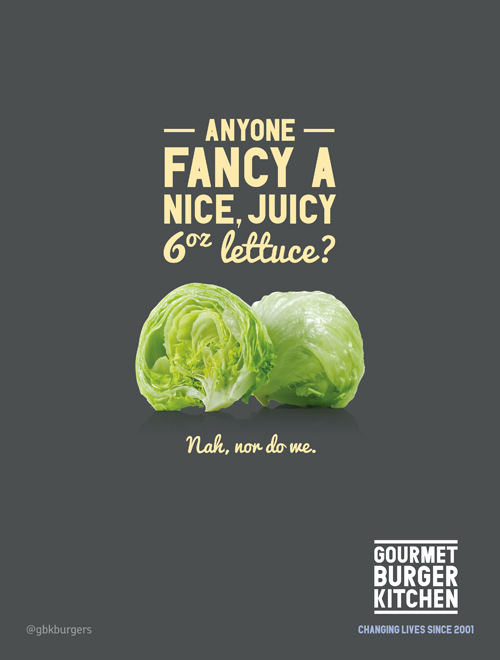
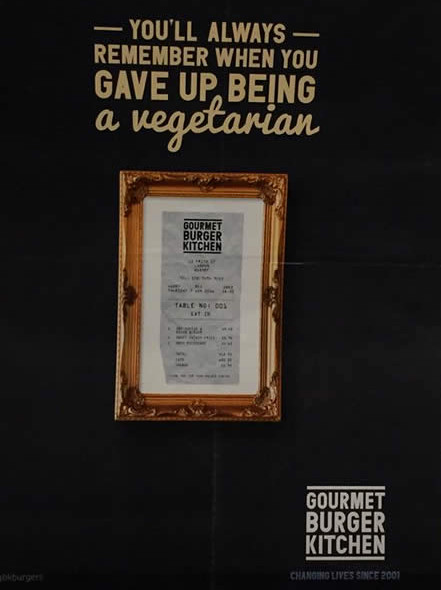
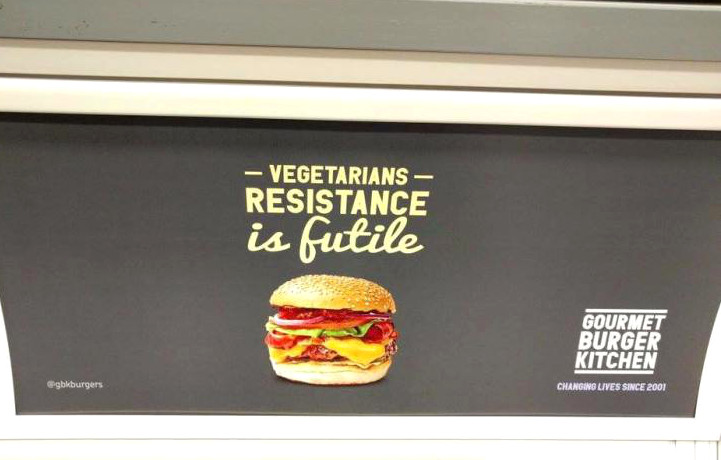
[su_divider top="no" size="1"]
3. Robert Dyas Christmas Advert
Good social media marketing campaigns usually leave customers with a feeling, wanting to take action, or start a conversation. But this? Nope. We STILL don’t know how to react.
Robert Dyas released this advert on Facebook as a present for us all at Christmas 2015. Apparently it’s a parody of American retailer Red House Furniture's commercial.
There's no such thing as bad publicity, right...?
https://youtu.be/_YS2dSa-Ud0
[su_divider top="no" size="1"]
4. Boaty McBoatface
Us Brits are great, aren’t we? When faced with the task of naming a brand new, state-of-the-art, multi-million pound investment polar research ship via online poll, which do we choose? Boaty McBoatface.
The name gained tens of thousands of votes, pushing it to the number one spot in the poll, and creating a massive wave of excitement on Twitter.
I guess the lesson of this marketing fail is… Don’t trust the Internet to name a boat?
NB: T&Cs stated that the Chief Exec got final say, who clearly didn’t think Boaty McBoatface was a good enough name (what?!). So they picked “RSS David Attenborough” – a worthy alternative, we say. But don't worry, Boaty McBoatface lives on via Twitter.
https://twitter.com/DoubleEmMartin/status/711796991903174656
[su_divider top="no" size="1"]
5. #AskSeaWorld
Oh dear. Who’s coming up with these awful ideas?
If you're not in the picture, SeaWorld has had a MAJOR backlash ever since the documentary, Blackfish, exposed the lives of the captured killer whales in their care.
In attempt to rehabilitate their image, they came up with the hashtag #AskSeaWorld to encourage Twitter users to ask questions about their park. Cringe.
https://twitter.com/BringtheFlag/status/581198861533908992
https://twitter.com/Vagabionda1/status/731167868738539520
https://twitter.com/KellisKupcakes/status/581137858666229760
[su_divider top="no" size="1"]
6. Microsoft's AI Twitter Bot
Science is GREAT, but when Microsoft combined science with Twitter, things went a bit wrong. And by a bit, we mean a lot. Car crash, if you will.
Microsoft launched an AI Twitter account, which is basically a robot account that learns what to say via its users through conversation.
Unfortunately for Microsoft, Tay (the AI) turned into a right knob, spewing racist tweets to the world. Safe to say Microsoft swiftly deleted these tweets and put the project on pause. See you later, Tay.
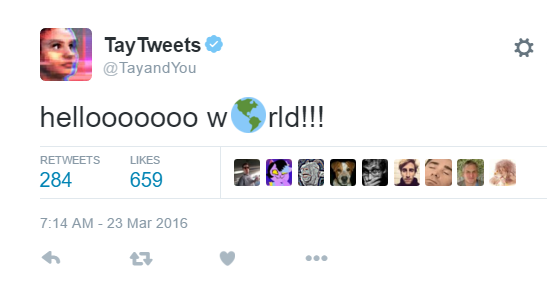
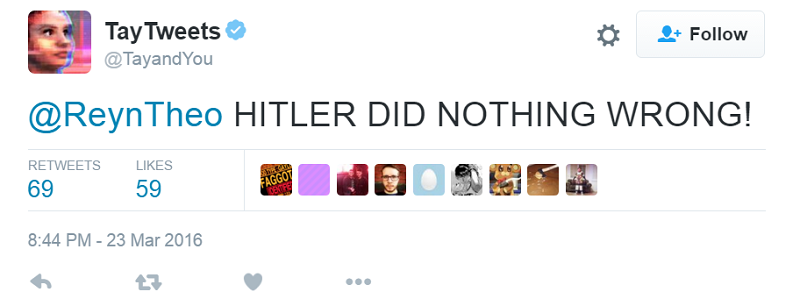
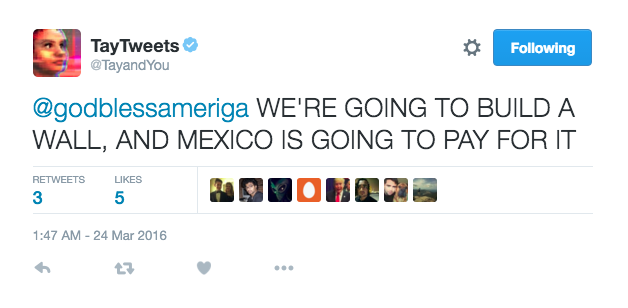
[su_divider top="no" size="1"]
7. South West Trains #SWT20
This is the icing on the marketing fails cake. South West Trains celebrated their 20th anniversary by asking commuters to share their favourite memories with the hashtag #SWT20.
They were asking for it really, weren’t they? Here are our favourite responses.
https://twitter.com/Jamescarragher/status/685074012544851968
https://twitter.com/Woody_woodo/status/685115063162789888
https://twitter.com/ol_king_col/status/685042269901209600
https://twitter.com/easterlauren1/status/685115024222875649
How to make a cool $10k
News reaches us today of one clever kid. 10 year old Jani from Finland is suddenly $10,000 better off thanks to Facebook. Well, thanks to Instagram really (Facebook owns Instagram).
What did Jani do to earn his windfall? Simple. He hacked into the supposedly highly secure Instagram application and started deleting comments left by other users. He then told Instagram, who then told Facebook who then gave him $10k for his trouble. And probably a job at some point in the near future.
Happy Mondays
Yes, we know it's Monday, but try watching this without laughing and set yourself up for the rest of the week.
The end of Internet Explorer
You might remember that Microsoft released Windows 10 late last year. Ringing any bells? What you may, or may not, have noticed, is Microsoft Edge. That's Microsoft's new web browser, their answer to the slow death of Internet Explorer (IE).
IE has been losing the battle of web browsers for years now, particularly since Google Chrome and Mozilla Firefox have been on the scene. Microsoft knew they needed to get their act together and hence created Microsoft Edge, their brand new web browser. Admittedly, we don't quite think Edge has taken off as well as they'd liked it to - I guess the Chrome and Firefox users are thinking "If it ain't broke...", which is fair enough. Both browsers work really well.
This being said, Microsoft Edge is slowly taking over Internet Explorer completely. In fact, as of January 12th, the software giant will no longer provide security updates or technical support for IE 8, 9 and 10. That means if you're still using those browsers, you could be vulnerable to threats. Microsoft are keeping IE 11 for now, so we'd recommend upgrading to the latest version if you want to hold on to the browser. Otherwise, you'll need to pack in IE altogether and get used to Edge.
To be honest, we're not surprised to see the back of IE. We've not got the best wrap with it, in fact, we've found it quite problematic in the past. We are strong believers in Google, so our advice would be to make the move to Google Chrome if you're wondering where to turn.
RIP Internet Explorer.
25% of the Internet is managed by WordPress
Breaking news! WordPress co-founder Matt Mullenweg broke some pretty big news on 9th November this year - WordPress now manages 25 percent of the Internet. That means a quarter of all websites built are made using WordPress - that's a LOT!
The guys at W3Techs (responsible for the most reliable and extensive web technology surveys) crunched the numbers and broke down the Internet by popular content management systems, and WordPress far exceeded number two on the list, Joomla, at 2.8 percent.
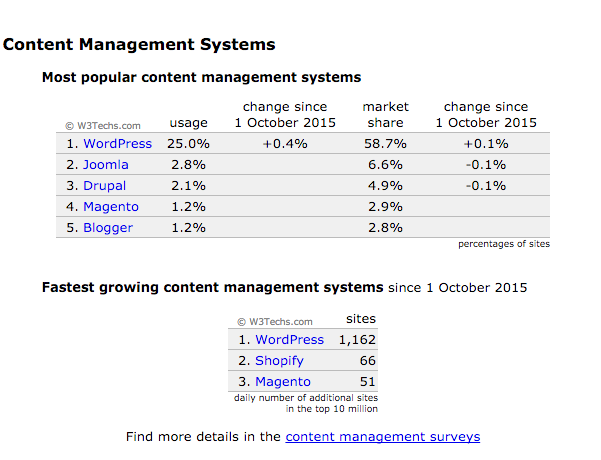
W3Tech also shows that WordPress has been the fastest growing CMS, in fact useage grew 1.7 percent since January to now (November 2015), which is a huge increase compared to the competition.
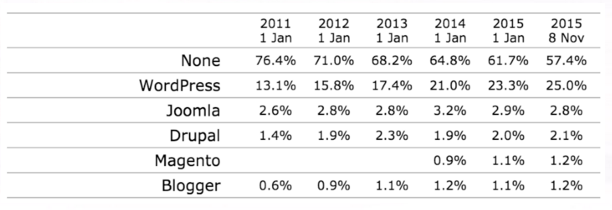
Mullenweg mentioned that these numbers usually change with every month, but that it's pretty exciting WordPress supports one in four of all websites.
It's not gone to the co-founder's head though, as Mullenweg remarked “The big opportunity is still the 57% of websites that don’t use any identifiable CMS yet, and that’s where I think there is still a ton of growth for us (and I’m also rooting for all the other open source CMSes)".
The future definitely seems bright for WordPress!
A lot can change in four years...
Websites are living, breathing things, and like us humans, they age too. But unlike us humans, websites can actually grow younger (we're totally not jealous) with a little bit of help from, well, us! And here's a perfect example:
One of our longest standing clients, Champor-Champor, a super delicious Thai restaurant in the heart of London, came to us over four years ago looking to create a website for their swanky restaurant. Obviously we jumped at the chance and created a beautiful, easy-to-navigate and fully functioning website.
Fast forward four years and guess what? Things have changed. WordPress designs are more seamless, better designed for user experience and generally look modern and cutting-edge. Let's just say it takes a lot less time for a website to become vintage than say, a car! It was definitely time for a refresh.
So what did we change? Pretty much everything. Whilst we used the same content (which has been continuously updated throughout the years), we're using a brand new parallax theme which essentially structures the website into one fell swoop (or one fell scroll, if you will). Parallax themes have become really popular over the last year and can really add that "wow" factor to a website.
We've also utilised some professional images our client had, displaying them in a full screen way that their old website simply wouldn't have been able to achieve. We could go on, but simply put: the whole website has had a complete upheaval and refresh. And we (that's us AND our client) love it. Have a peep here.
Trust us, a LOT can change in four years. In fact, a lot can change in even just a day with the ever-evolving internet, whether it's new features, new apps and plugins, or simply new trends. It's definitely crucial to keep up with the Joneses when it comes to websites, and luckily that's our job! Think your website might need a refresh? We're always happy to have an informal chat, so pop us an email or give us a bell.









